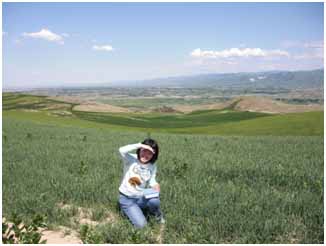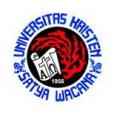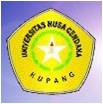Complete
This project aimed to address the problems associated with the reliability of E. amylovora-specific diagnostics by identifying new diagnostic targets and developing a new diagnostic protocol that can be used as the international standard.
What is the biosecurity problem?
Fire blight, caused by the bacterium Erwinia amylovora, is a destructive disease of apple and pear trees. Fire blight is estimated to cost the United States fruit industry over $100 million a year in crop losses and disease control.
E. amylovora is not currently found in Australia and as such is a major biosecurity threat to the Australian pomefruit industry. Accurate diagnosis of this bacterium is crucial for quarantine testing, incursion detection and incursion management. A number of the internationally accepted PCR tests for identification of E. amylovora used by research laboratories around the world have been found to be unreliable by Australian standards. False negative and false positive PCR results have been observed during routine testing for E. amylovora with some of these tests.
The main outputs of this project were to:
- evaluate available E. amylovora-specific PCR diagnostics
- identify and characterise endemic bacteria found on Fire Blight hosts in Australia
- conduct genomic sequencing of four genetically diverse strains of E. amylovora in order to identify the pan-genome of E. amylovora (the whole genome of the species consisting of core and flexible genomes) to determine the amount of intra-species genetic diversity
- identify new chromosomal diagnostic targets for the detection of E. amylovora using the E. amylovora pan-genome
- detect genetically diverse strains of E. amylovora core sequences of DNA that are conserved between all strains of E. amylovora (but are not present or conserved in closely related bacteria) need to be targeted, and
- validation of new diagnostic targets (PCR and/or micro array analysis)
Who are the end-users of your research?
The end users of this research are the Australian apple and pear industry, state and federal quarantine agencies and associated diagnostic laboratories.

Rachel Powney in the glasshouse at Cornell University
.jpg)
Professor Steven Beer, Jean Bonasera, Rachel Powney and Brendan Rodoni in the Beer Lab at Cornell University
STUDENT

Miss Rachel Powney
Student CRC60037: Fire Blight Diagnostics - PhD
rachel.powney@dpi.vic.gov.au
Phone: 03 9210 9222
Fax: 03 9800 3521
Read More
PROJECT DETAILS
Complete
Supervisor
Dr Brendan Rodoni (DPI VIC) and Dr Kim Plummer (La Trobe University)
Supervising Institution
DPI, Victoria
Term
April 2007 – April 2010
LOCATION
This project seeked to proactively manage incursion threats through the development of new Indigenous and local knowledge-based approaches to biosecurity management. This requires drawing together key issues such as leadership, governance, business development and training to build sustainable enterprises and enhance the management of harmful plant pests and diseases.
Research outcomes:
- An evaluated model for community management of biosecurity
- An implemented integrated strategy for managing biosecurity
Research implications:
For industry: ‘Industry’ is complex in reality. For managing biosecurity, all ‘industries’ must meet at the planning table and agree to cooperate in implementing the strategy. In one implementation, the Maluku Province brings all sectors together at the planning table, and each meeting ends up with activities to carry out that aim at engaging across sectoral participants in implementing a sustainable strategy.
For community: ‘Community’ is also a commonly used term but is complex in reality. The reality is that ‘community’ is ‘everybody’. Industry is located in communities and its leaders are community members. So are governance personnel at all levels. The division between such terms is misleading. The implication is that the term ‘community’ must be analysed to ensure its actual sectors and stakeholders in that situation are mapped and engaged.
For policy makers: ‘Policy makers’ are at all levels of governance, from local town management to the national level. Policy makers all live in communities somewhere and usually belong to an industry in addition to politics. The main implication for policy makers, however, concerns the need to ensure that policies have as part of their wording and legislative base the capacity to engage with the intended stakeholders in a cycle of development, implementation, evaluation and modification. The tendency in both the countries which have been involved in the research is that the further away from the political centre (Canberra, Jakarta) a place is, the less influence policy has and the less true it is to its intended form when is implemented there.
For universities and research centres: In both Australia and Indonesia, universities are an important group of stakeholders. They often incorporate research centres, but sometimes research centres are located outside of universities. In Indonesia, the research sector is, if anything, more important than in Australia to development issues. It is unusual for high level policy makers to lack Masters or PhD awards, and they look to universities for guidance on many development issues. In the Eastern Indonesian region, government has worked with NGOs and the university sector to develop an organization called Jaringan Peneliti Kawasan Timur Indonesia (JiKTI) which is a network of active researchers concerned with development and especially biosecurity across the whole extent of that vast region adjoining northern Australia. This provides an immediately accessible means of networking with Indonesia about biosecurity and related issues.
Acknowledgements:
- Dr David Eagling, Research Leader of the CRC National Plant Biosecurity, whose vision triggered the need for this project
- Professor John Lovett, Chair of Board of the CRC National Plant Biosecurity, for untiring work with international stakeholders
- Dr Simon McKirdy, CEO of the CRC National Plant Biosecurity
- Mr Petra Karetji SPd, Member of Board of Trustees, BaKTI Foundation, Makassar
- Jangkang Foundation staff, Agung and Winarto
Team members whose research all contributed to the outcomes:
- Professor Kaler Surata, University of Mahasaraswati, Denpasar, Bali
- Wayan Mudita, University of Nusa Cendana, Kupang, West Timor
- Marthen Ndoen, Christian University of Satya Wacana, Salatiga, Central Java
- Theo Litaay, Christian University of Satya Wacana, Salatiga, Central Java
- Eka Martiningsih, University of Mahasaraswati, Denpasar, Bali
- Sri Jayantini, Foreign Language College Saraswati, Denpasar Bali
- Remi Natonis, University of Nusa Cendana, Kupang, West Timor
- John Tasirin, Pacific Institute for Sustainble Regional Development, Manado, Northern Sulawesi
PROJECT LEADER

Dr David Eagling
Project Leader CRC70138: An Indigenous community and local knowledge-based model to manage harmful plant pests and diseases
d.eagling@crcplantbiosecurity.com.au
Phone: 02 6201 5262
Fax: 02 6201 5067
Read More
PROJECT DETAILS
Complete
Term
April 2008 - June 2011
Budget
1,555,200 (cash and in-kind support)
PROGRAM DETAILS
LOCATION
CORE CRC PARTICIPANTS
This project established a National Reference Laboratory for Dermestidae, with particular reference to the genus Trogoderma. The laboratory provides molecular and morphological diagnostic services and training. It also provides a resource for other biosecurity projects, potentially providing methods specific to surveillance and contingency plans, in the event of incursion of pest Trogoderma.
Research outcomes:
- A national laboratory with expertise in the diagnostics of khapra beetle and related species has been established within DAFWA
- A trapping program to collect species similar to khapra beetle has been conducted, collecting approximately 10000 specimens from 91 sites around Australia
- There has been ongoing taxonomic work to understand and better recognise khapra beetle and related species and to provide training and other resources to help with the recognition of this pest
- A DNA ‘fingerprint’ type technique has been developed to perhaps allow future identification of khapra beetle using rapid and reliable DNA tests
Research implications:
There has been considerable work done to improve our ability to recognise khapra beetle. Work has been done to study similar species, provide resources to help others identify the species, and develop new tools with the potential to rapidly identify the species. There is a great opportunity for some of these new tools to significantly improve our ability to detect and identify khapra beetle rapidly.
Acknowledgements:
There is a very long list of people warranting thanks, far too many, to be named here. Hopefully all those who’ve assisted with the project and especially AGI collaborators in the trapping programme, understand our appreciation of their efforts. One person requiring special attention is DAFWA’s Mike Grimm who was one of the driving forces behind the project in its early stages.
Thanks to CRC/GRDC for their funding and other support with the project and to DAFWA for their institutional support for the project.
PROJECT DETAILS
Complete
Term
March 2009 - November 2011
Budget
$995,635 (cash and in-kind support)
PROGRAM DETAILS
LOCATION
This project developed advanced molecular diagnostic methods and immunological tools for the detection of plant viruses, which can be expediently applied in both post entry quarantine (PEQ) (import) and market access (export) context. Generic tests that are cost effective and reliable for plant virus detection will help reduce biosecurity risks from importations of plant material to Australia and New Zealand.
Research outcomes
In phase I of this project the project team:
- conducted a review of the importation processes of cereals into Australia and New Zealand
- designed and validated molecular tests that target groups of plant viruses that pose a threat to the grains industry, and
- investigated the application of the Flinders Technology Associates (FTA) card technologies for rapid and safe collection of plant virus samples, as well as storage of viral ribonucleic acid (RNA).
Research implications
This project has identified some areas for improvement for the importation of winter cereals into Australia. A superior diagnostic tool for the detection of potyviruses, the largest plant virus genus, has been developed and validated. A further four plant virus genus-specific tests have been designed and are currently being validated.
Importantly, this project has generated a foundation base for the design, development and validation of quality ready-to-go diagnostic tools to be used by quarantine pathologists. Strategies for the safe transportation of positive controls have also been initiated as a result of this project.
Acknowledgements
The project team would like to acknowledge the following collaborators for their support in project development and continued support for PEQ Phase II (CRC40135):
- Angela Freeman (Victoria Department of Primary Industries)
- John Thomas (Queensland Department of Primary Industries)
- Mark Gibbs (Australian National University)
- Mark Whattam (Australian Quarantine and Inspection Service)
- Kevin Davis (Biosecurity Australia)
- Karen Armstrong (Lincoln University, NZ)
- David Eagling (Cooperative Research Centre for National Plant Biosecurity)
PROJECT LEADER

Dr Brendan Rodoni
Project Leader CRC40050: Post Entry Quarantine (phase one)
brendan.rodoni@dpi.vic.gov.au
Phone: 03 9210 9264
Fax: 03 9800 3521
Read More
PROJECT DETAILS
Complete
Term
January 2008 – June 2009
Budget
$743,721 (cash and in-kind support)
PROGRAM DETAILS
CORE CRC PARTICIPANTS
This project will develop a range of computational models that can be used for testing various strategies relating to surveillance and management of fungal pathogens that undergo aerial dispersal. The research will also explore the effectiveness and feasibility of ongoing surveillance for the arrival of novel fungal pathogens in the Western Australian wheat belt and the effect of resistant cultivar selection on the genetic structure of fungal meta-populations. Finally the project will identify optimal strategies for the regional management of resistant cultivars.
What is the biosecurity problem?
A number of fungal plant pathogens of interest to biosecurity agencies undergo wind-assisted dispersal. This mode of transport allows pathogens to spread quickly and easily, and can result in rapid occurrence of multiple site infections. Deployment of resistant cultivars can be effective in controlling the spread of disease, however careful management is required to avoid breakdown of resistance leading to subsequent epidemics.
The main outputs of this project are to create?
- a model of wind-assisted dispersal able to simulate the dispersal of fungal pathogens across a given landscape under a given set of environmental conditions
- a surveillance model that allows rapid assessment of surveillance strategy capabilities to detect the movement of airborne fungal spores into or out of a given area
- an assessment of the feasibility and likely benefits of ongoing surveillance in the Western Australian wheat belt
- a spatially explicit, dynamic model of population genetic structure for fungal pathogens undergoing aerial dispersal in a fragmented landscape, and
- an assessment of optimal strategies for the spatial and temporal management of resistant cultivars.
Who will be the end-users of your research?
This research will be used to inform policy development relating to the detection of invasive organisms. The models constructed as part of this research will also be employed for further research into the genetic structure and dynamics of meta-populations in agricultural environments.
STUDENT

Mr David Savage
Student CRC60076: Spore Modelling PhD
david.savage@mac.com
Phone: 08 6488 7795
Read More
PROJECT DETAILS
Complete
Supervisor
Michael Renton and Martin Barbetti (University of Western Australia), Bill Macleod and Moin Salam (Department of Agriculture and Food Western Australia)
Supervising Institution
University of Western Australia
Term
March 2008 - March 2011
LOCATION
There are a number of aphid species that can vector viruses of biosecurity concern, causing direct damage, and render the product unsaleable. Uroleucon sonchi is one of the introduced exotic species that can be a pest on commercially grown lettuce crops. It has been sporadically observed in high numbers on lettuce in eastern Australia, but though it is found across WA, it is rarely found on lettuce grown around the Perth metro area. This project aimed to review the presence of U. sonchi in Western Australia lettuce crops, and test the attractiveness of lettuce varieties to U. sonchi sourced from this area.
What is the biosecurity problem?
Aphids can cause economic losses, reducing the viability of lettuce crops across Australia.
The main outputs of this project were to:
Provide information around possible variations of U. sonchi's host preferences, focusing on its feeding habit in Western Australia.
Who are the end-users of this research?
The horticultural industry.
STUDENT
Mr Cameron Brumley
Student CRC60145: Assessment of Uroleucon Sonchi on Lettuce in Western Australia (Hons)
cameron.brumley@agric.wa.gov.au
Phone: 0893683895
Read More
PROJECT DETAILS
Complete
Supervisor
Dr Sonya Broughton (DAFWA) and Professor Jonathan Majer (Curtin University of Technology)
Supervising Institution
Curtin University of Technology
Term
March 2009 - June 2010
LOCATION
This project aimed to develop an effective knowledge exchange strategy for the grains industry to improve its phosphine insect resistance management outcomes through identification of the methods in which information is delivered and exchanged through the grains supply chain.
Research outcomes
- Identification and evaluation of the networks that exist within the grains industry for the delivery and exchange of information relating to improved grain storage practices and limiting the development of phosphine resistance in insects of stored grain.
- Establishment of mechanisms to deliver this information through co-funding of Grains Biosecurity Officers.
- Identification of economic factors that influence phosphine resistance management practices.
Research implications
Better methods for exchange of information will raise awareness of the issue of phosphine resistance and commence a gradual improvement in practice amongst all parts of the grains supply chain.
Acknowledgements
PHA wishes to acknowledge the Cooperative Research Centre for National Plant Biosecurity (CRCNPB) for supporting this project.
PHA also acknowledges the contribution of the Bureau of Rural Sciences who were contracted by PHA to undertake the ‘Social networks for phosphine resistance management in the stored grains industry’ survey, the Grains Biosecurity Officers in each state who implemented the management practices and to all stakeholders involved in the consultation process and who contributed to this project.
PROJECT LEADER

Dr Sharyn Taylor
Project Leader CRC70096: Grain Knowledge Networks
staylor@phau.com.au
Phone: 02 6215 7700
Fax: 02 6260 4321
Read More
PROJECT DETAILS
Complete
Term
September 2008 – September 2010
Budget
$580,000 (cash and in-kind support)
PROGRAM DETAILS
This project aims to develop mathematical models to investigate the emergence of resistance to fumigants, particularly phosphine based fumigants. A particularly important aspect is the possibility that resistance is directly influenced due to the migration of resistant stored grain insects from silos to and from surrounding farmland, where they breed with non-resistant insects. Computer software will be developed to assess different fumigation strategies with the aim to reduce (or eliminate) resistance, taking into account ecological data on movement of insects to surrounding farmland.
What is the biosecurity problem?
Phosphine is the most common fumigant used today to treat stored grain infestations. Resistance to phosphine is a major threat to the grain industry and inadequate fumigation strategies may result in infestations of resistant insects that are difficult to control. Grain borers tend to reach unnaturally high population numbers due to mass storage of grain food. There is a need to understand the impact of refuges on the emergence of resistance.
The main outputs of this project are to:
- understand the impact of refuges on the emergence of resistance
- develop a management tool for farmers to allow more effective management strategies to be applied
- develop much needed skills in mathematical model development in the grains industries, and
- limit the risk of resistant strains of stored grain insects becoming endemic to the Australian grain industry.
Who will be the end-users of your research?
Grain handling companies and farmers will have a fumigation management tool (as computer software) that will help them decide the most effective fumigation management strategies.
STUDENT

Mr Jason Thorne
Student CRC60129: Mathematical modelling of fumigant resistance - PhD
j1.thorne@student.qut.edu.au
Read More
PROJECT DETAILS
Complete
Supervisor
Dr Glenn Fulford (QUT), Dr Ian Turner (QUT), Dr Andrew Ridley (QPI&F) and Dr David Schipallus (QPI&F)
Supervising Institution
Queensland University of Technology
Term
June 2009 - June 2012
LOCATION
This project developed an understanding of how the pathosystems may operate in Australia and determined what action to take, should either or both of the pest organisms arrive in the country. The knowledge gained will be used to make scientific and advisory recommendations in order to increase Australia's ability to deal promptly and appropriately with an incursion of either organism.
What is the biosecurity problem?
The bacterium Xylella fastidiosa is likely to be an emergency plant pathogen incursion in Australia in the future. The pathogen is part of an economically devastating pathosystem involving the vector insect Homalodisca vitripennis, the glassy-winged sharpshooter. The bacterium is associated with many diseases including Pierce's disease in grapevines. The pathogen is widespread in America and is spreading to other areas of the globe. The geographic distribution of the pathogen in the Pacific Islands is currently unknown although the insect vector has spread to Easter Island, French Polynesia, Hawaii and the Cook Islands and is clearly capable of relocating long distances across the Pacific.
The project investigated how X. fastidiosa and H.vitripennis will behave under Australian conditions. In particular, the potential interactions between native Australian flora and fauna and the two pest species was be explored. It is critical to develop a greater understanding of the system as it would operate in Australia in order to minimise the economic impact of either species arriving. The pathosystem is a threat to a wide range of horticultural crops, and could have severe detrimental impacts for Australia's primary production.
The main outputs of this project were to:
- establish the potential Australian native host plant range of H. vitripennis
- establish the potential Australian native host plant range of X. fastidiosa
- identify the native insect species currently established in Australia that have the ability to vector the pathogen
- quantify the extent of symptomless X. fastidiosa infections currently in Australia, if any, and
- prepare scientific and advisory recommendations that will enhance Australia's capacity to deal promptly and appropriately with an incursion.
Who are the end-users of your research?
AQIS, the government and the nursery and horticultural industries benefit from the advisory outputs.
STUDENT
PROJECT DETAILS
Complete
Supervisor
Dr Leigh Pilkington (NSW DPI) and Professor Geoff Gurr (CSU)
Supervising Institution
Charles Sturt University
Term
February 2009 – February 2012
LOCATION
This project examined the relationship among invasive Russian wheat aphid (RWA) lineages around the world. This information was then used to develop a pathway analysis of historical RWA invasions.
What is the biosecurity problem?
With increasing global trade there is a corresponding increase in the likelihood of RWA incursions from areas where this species is endemic, potentially increasing the biosecurity risk of this species to the Australian grains industry.
The main outputs of this project were to develop:
- a greater understanding of the genetic basis of invasiveness in aphids
- a pathway analysis of invasive RWA populations
-
skills in insect invasion biology/genetics, and
- an improved biosecurity plan for the RWA.
Who are the end-users of your research?
The end users of the pathway analysis of invasive RWA populations are Biosecurity Australia, Plant Health Australia, and the Grains Research and Development Corporation. Research on insect invasion biology is provided to the international research community via publications in high impact science journals.

Bo Zhang sampling in Xinjiang, Western China
STUDENT
PROJECT DETAILS
Complete
Supervisor
Dr Owain Edwards (CSRIO), Dr Susan Fuller (QUT) and Dr Le Kang (Chinese Academy of Science)
Supervising Institution
Queensland University of Technology
Term
January 2009 - January 2012




















